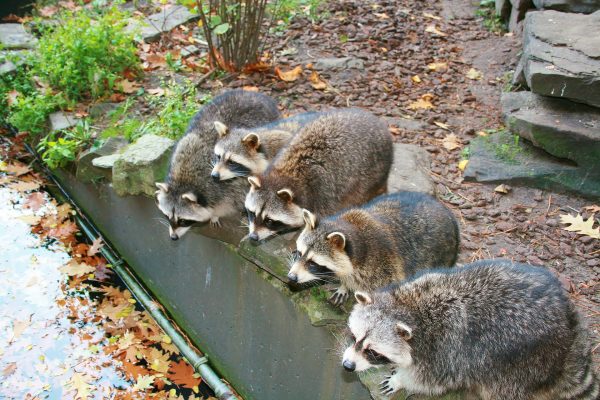

Whether they move at night or during the day, many different animals are waiting to turn them to dinner.

Raccoons are usually nocturnal, but sometimes they roam about during the day too.

What Animals Do Raccoons Eat (& Some that Eat Them Too)

What Animals Do Raccoons Eat (& Some that Eat Them Too).Our online platform, Wiley Online Library () is one of the world’s most extensive multidisciplinary collections of online resources, covering life, health, social and physical sciences, and humanities. With a growing open access offering, Wiley is committed to the widest possible dissemination of and access to the content we publish and supports all sustainable models of access. Wiley has partnerships with many of the world’s leading societies and publishes over 1,500 peer-reviewed journals and 1,500+ new books annually in print and online, as well as databases, major reference works and laboratory protocols in STMS subjects. Wiley has published the works of more than 450 Nobel laureates in all categories: Literature, Economics, Physiology or Medicine, Physics, Chemistry, and Peace. has been a valued source of information and understanding for more than 200 years, helping people around the world meet their needs and fulfill their aspirations.
#Raccoon predators professional#
Our core businesses produce scientific, technical, medical, and scholarly journals, reference works, books, database services, and advertising professional books, subscription products, certification and training services and online applications and education content and services including integrated online teaching and learning resources for undergraduate and graduate students and lifelong learners. Wiley is a global provider of content and content-enabled workflow solutions in areas of scientific, technical, medical, and scholarly research professional development and education. Raccoon predation represents a conservation threat of international significance, because the Queen Charlotte Islands contain the majority of the world's ancient murrelet population, as well as substantial populations of several other burrow-nesting species that are also susceptible to raccoon predation. Predation levels were similar in 19, in the presence of raccoons, and declined by 80% in 1992, following the removal of 3 raccoons. The suggestion that raccoons were responsible for most seabird losses is supported by changes in the level of predation recorded between years. Monitoring of seabird remains indicated that about 92% (n = 38) of headless carcasses were consumed or converted to feather piles by avian scavengers within <3 days, indicating that the number of carcasses found on predation transect surveys could underestimate raccoon predation by as much as an order of magnitude. Estimates of raccoon predation based on the number of headless carcasses and diggings found on transects were 35 ± 35 and 71 ± 42, however, these are considered underestimates because they do not account for the rapid conversion of seabird carcasses by avian scavengers, or the capture of birds aboveground. Twenty-one surveys yielded 6 headless carcasses, 77 feather piles, 30 broken eggs, 2 dead chicks, and 20 dug burrows, representing an estimated loss of 488 ± 110 adult and subadult birds, and 188 ± 102 eggs and chicks within the colony (95% CL). These covered about 17% of the colony area, and were carried out every third afternoon from 8 April to 8 June. We estimated predation from all sources within the seabird colony by conducting transect surveys. Eleven of 15 such investigations led to fresh evidence of predation on ancient murrelets, such as dug burrows, broken eggs, and one or more decapitated adults, suggesting that raccoons were responsible for these types of predation sign. We obtained radiolocations and sightings for one female and one male throughout the seabird breeding season, and investigated these locations for evidence of predatory activity. An estimated 3-4 raccoons were present on the island. In 1991, we described and quantified raccoon predation within a 14.9-ha colony of about 1,200 pairs of ancient murrelets (Synthliboramphus antiquus). We evaluated the threat posed by introduced raccoons (Procyon lotor) to native, burrow-nesting seabirds of the Queen Charlotte Islands, British Columbia.


 0 kommentar(er)
0 kommentar(er)
